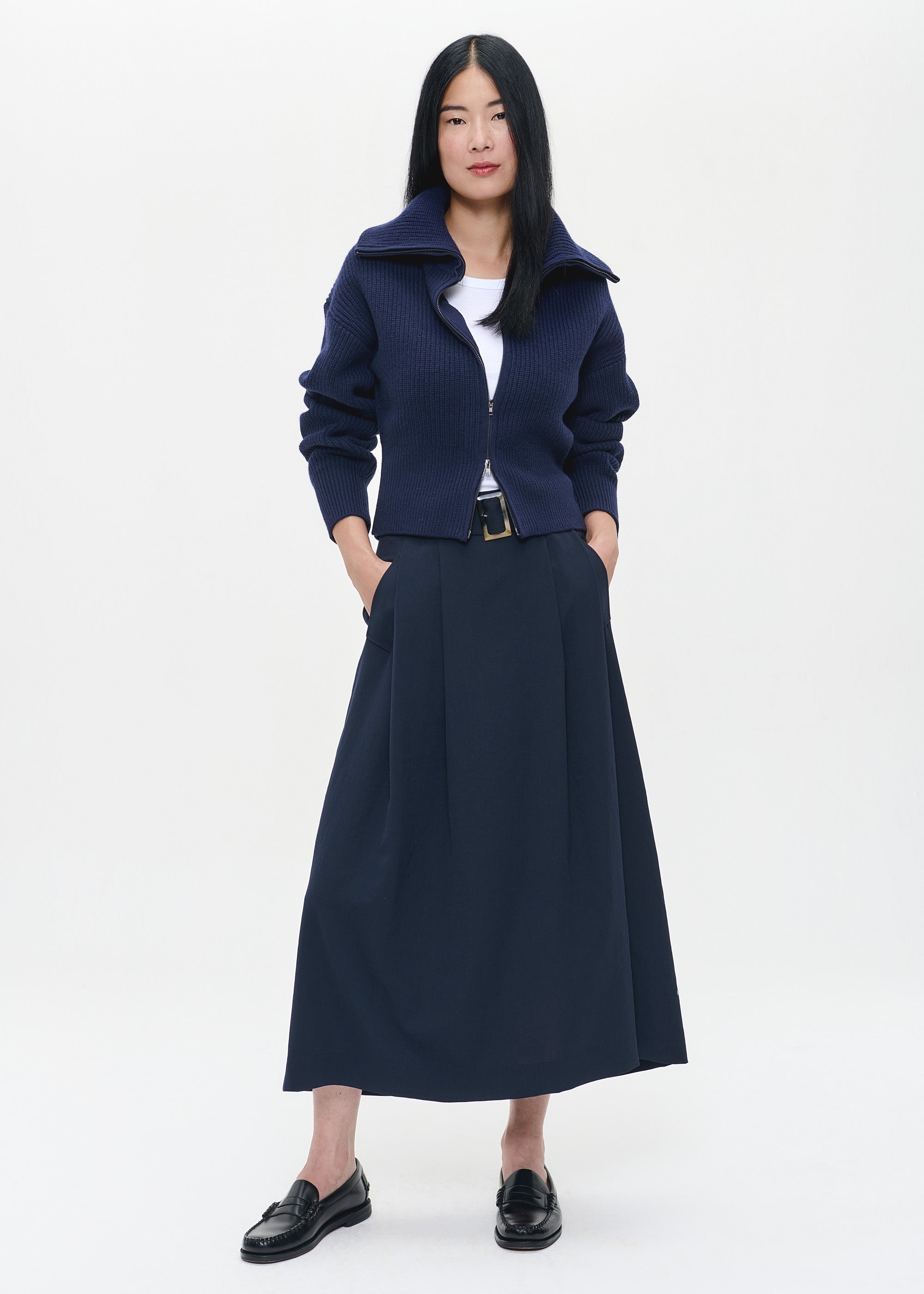
Wear & Care Guide
A well-cared-for knit can enhance any look. These tips will help you maintain your beloved ZENGGI knits so they stay looking new for years to come. Read more? Get the book.
Wash less, air out more
One of the perks of wool is that it stays fresh longer between washes compared to garments made of cotton or synthetics. This means fewer washes throughout the garment lifecycle and a considerably lower impact on the environment.
Air out your wool garments by letting them hang outside over the night, preferably in humid conditions. If a stale smell does not disappear after the garment has spent a night hanging outside, then the time is right for washing.
Wool can attract vermin like moth. Make your closet unpleasant for all uninvited guests by:
Storing each garment in a cotton bag. This will make them out of reach for any vermin. Spray your clothes with cedar wood oil or store them with bricks or balls or rings made of cedar wood. Moth and fur beetles hate the sharp smell of cedar. If you’re using cedar wood, make sure to scrape them once in a while to keep them spreading the smells.

What do I need to consider when buying knits?
Start by reading the care label. There is a difference between synthetic pills and pills on natural fabrics. Synthetic pilling often erupts in loose threads when you try to remove them, and that’s a problem you won’t have with garments made of natural fabrics. At ZENGGI we consciously choose our fabrics with as little as acrylic as possible, to prevent pilling.
Should I return a new sweater with pills?
Pilling is part of the natural process of cashmere and woolen fabrics, all cashmere will pill, especially when it's new. If you can’t stand removing the pills we recommend avoiding cashmere altogether. Removing pills from cashmere and wool is a part of the care advice.
How to remove pills?
Use a fabric shaver. A fabric shaver will draw in the fabric and cut off the pills. It’s both effective and gentle. The Pilo shaver is made to remove pills on both synthetic and natural fabrics.
How to use a fabric shaver
- Make sure the Pilo 1 has been cleaned properly and remove the leftover lint and fuzz from the last time you used the machine.
- Put your garment on a flat surface.
- Press the On/Off button and start circling the areas with pilling carefully.
- Increase pressure gradually.
- If you’re working on a heavily pilled garment you need to check the container and empty it after a while.
- Done!
Featured collection
KNITWEAR & CARE















